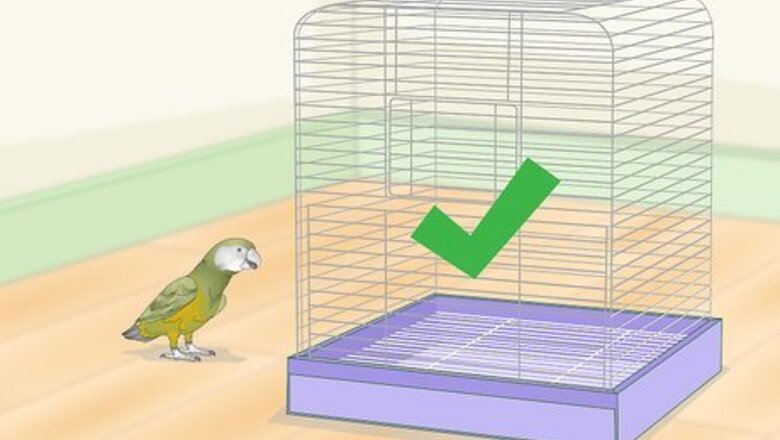
views
Making the Cage Interesting
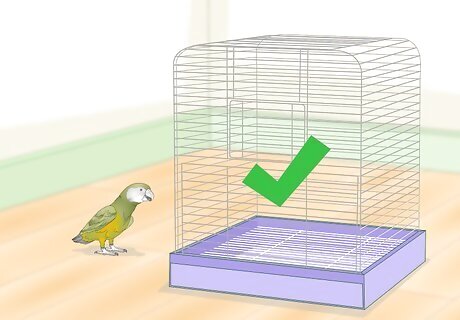
Make sure the cage is large enough. Your Senegal parrot needs a nice large space to move around in, play, and relax. Your cage should be no smaller than 20 inches (50.8 cm) long by 20 inches (50.8 cm) deep by 28 inches (71.12 cm) high (for one parrot), but bigger is always better. Look for a cage with ¾ inch (1.9 cm) bar spacing. Look for a cage with horizontal bars (at least on 2 sides) for your parrot to climb.
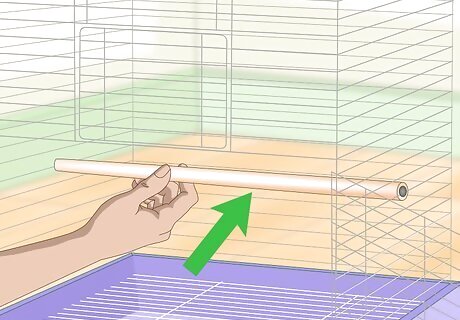
Add perches the cage. Senegals also need perches to hang out on. Include at least two perches in your Senegal’s cage: one lower to the bottom near the food, and one up high for roosting. You can select perches made of soft wood that your Senegal will enjoy chewing on. 5/8 to 1 inch (1.59 to 2.54 cm) perches are the ideal size for Senegals. Perches can be swinging or stationary. Senegals enjoy both. When the perch becomes worn, broken, or splintered, replace it with a new perch.
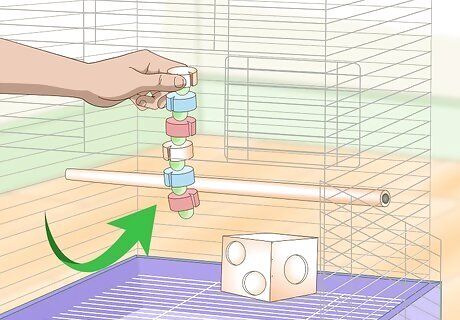
Provide lots of toys. Stocking your bird’s cage with a variety of toys helps to keep them busy and entertained. Senegals especially love to bite and chew, so include some toys made of soft wood (that they can destroy). Chewable toys such as wooden blocks, leather, paper, and cotton rope will give your parrot something to chew while keeping their beak strong. Swings help keep parrots active. The parrot can exercise and play on the swing. Foraging toys are toys with treats hidden inside. These toys can occupy parrots for hours and keep them mentally active and stimulated. Toys that make sounds, like bells and keys, will give your parrot something to make noise with. Puzzles and ladders provide a challenge for your parrot, which can keep the bird engaged for long periods of time.
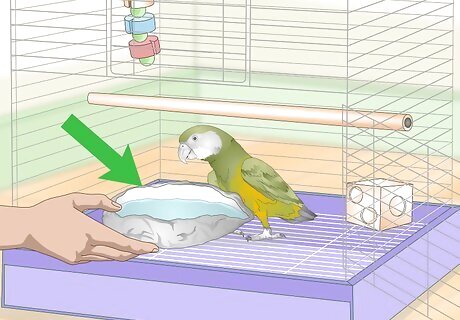
Include a bird bath. Parrots enjoy splashing and getting wet. You can help your bird stay entertained by providing a large, shallow dish of water. Include a small dish (or fountain-style dispenser) for drinking, to discourage your bird from drinking the bathwater. Change the bathwater and clean the bowls daily. To wash the bath, use warm, soapy water. Remove any soiled areas with a clean scrub brush. Dry the bowl with a towel before refilling it with water. Once a week, run the bird's water bowls through the dishwater with hot water. This will help sanitize the bath and prevent bacteria from growing.
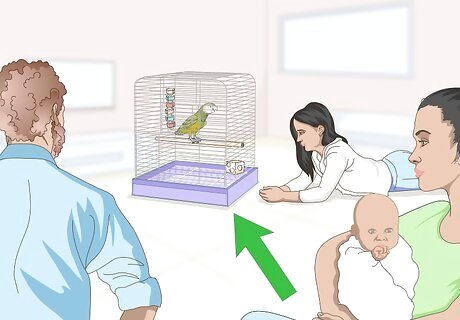
Place the cage in a central location. Your parrot wants to be part of the family. As such, they will be most happy if their cage is centralized within the home. Place your Senegal's cage in the living room, den, or other space (excluding the kitchen) where people frequently hang out. The kitchen is not a good option, because parrots are sensitive to smells.
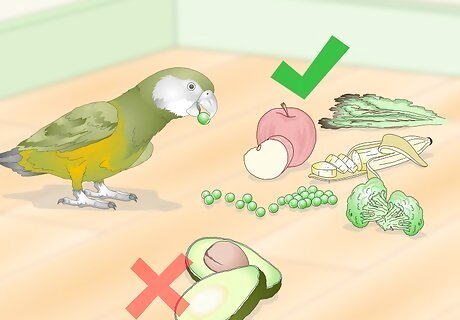
Offer a variety of foods. Another way to entertain and stimulate your bird is to offer a varied and interesting diet. The base of your bird’s diet should be specially formulated bird pellets, but you can provide some entertainment (and nutrition) by offering ¼ to ½ cup (59 to 118 ml) of varied fresh produce each day. Try offering: Beet greens Carrots Peas Corn Broccoli Sweet potatoes Apples Apricots Bananas Avoid avocado! All produce should be washed, peeled, and chopped/grated.
Interacting with Your Bird
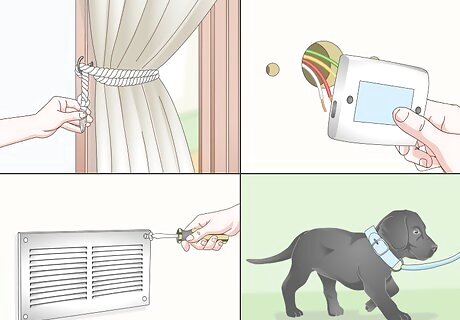
Bird proof your home. Before you take your parrot out of its cage, make sure that there are no dangerous objects or environmental hazards. Some ways to make your home safe include: Close the windows and cover them with blinds or drapes. Tie up curtain cords so that the parrot does not become tangled up. Hide or cover electrical cords, as the parrot might chew on them. Cover air ducts and small holes that your parrot could hide in. Remove other pets from the room. Keep the kitchen door closed. Cooking smells and pan fumes can cause respiratory problems for your parrot. Supervise your parrot constantly while it is out of its cage.
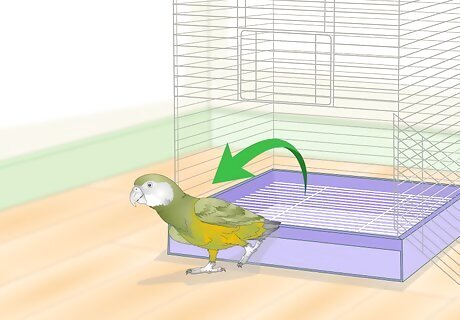
Let your bird out of its cage. In order to keep your bird happy and healthy, it is important for your Senegal to spend time outside of their cage each day. Make sure that any other household pets (such as dogs or cats) are in another room, then open your parrot’s cage door. Extend your hand and allow your bird to step up onto it. When they step onto your hand, provide a treat (such as a sunflower seed). During out of cage time, you can play with your bird, hold them on your shoulder, or allow them to explore with supervision. Provide another treat when you place the bird back into the cage, and then offer a meal. Never force your bird to exit the cage if they do not want to.
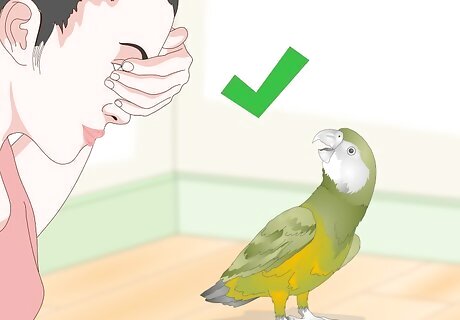
Play games with your bird. When it comes to entertaining your bird, nothing compares with focused interaction. Play classic games or make up your own. Set aside some time to play with your bird every day. Some games include: Peek-a-boo. Chase. Fetch or catch (with a ball). Call and response (speaking games).
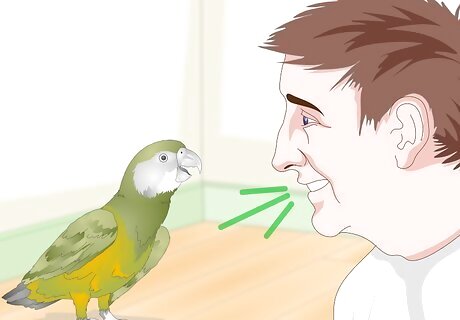
Talk with your bird as often as possible. Birds are best socialized if they are treated like members of the family. Rather than only interacting with your bird during scheduled play times, be sure to talk with your bird as much as you can. Greet them whenever you walk into the room. Read books out loud to them.
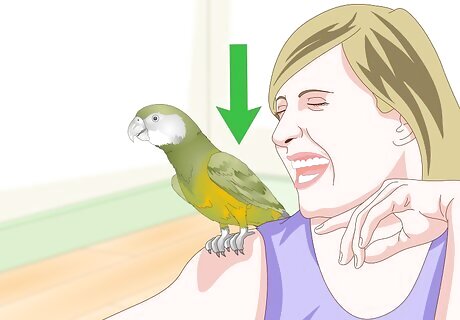
Allow them to sit on your shoulder. Senegals (more than some other species of parrots) will genuinely enjoy sitting on your shoulder, and accompanying you wherever you go. Senegals are notorious for bonding with just one person, and enjoying the company of that person all the time. If you are your Senegal’s favorite person, let them tag along with you around the house.
Providing Amusement When You’re Not Home
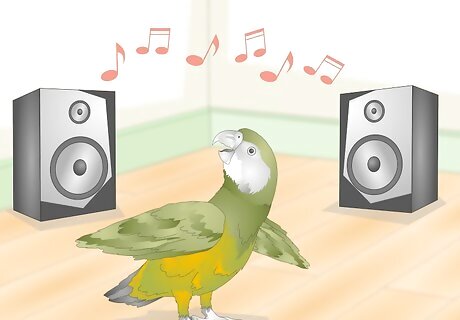
Turn on a radio. Parrots enjoy music as much as people do. Your parrot will also enjoy the sounds of people talking. If you are not going to be home for a little while, you might consider leaving the radio on for your bird.
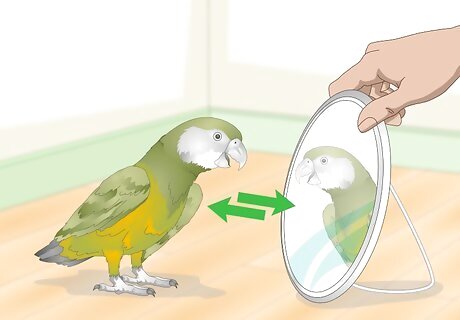
Consider adding a mirror. Some people advocate for placing a mirror in your parrot’s cage; others warn against it. Placing a mirror in your bird’s cage can definitely keep them entertained for hours, but it may cause problems later if you decide to introduce a second bird. Don't just place any mirror you find in the cage. Look for a mirrors designed for birds. Make sure the mirror is fixed to the cage and doesn’t present a risk to your bird.
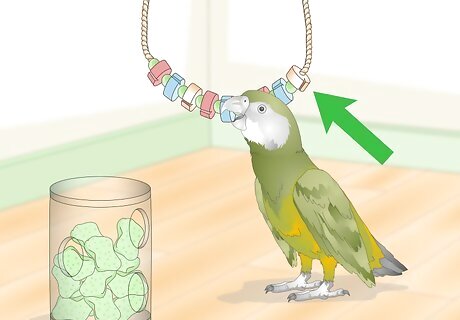
Provide interactive toys. Foraging toys and other interactive toys can help to keep your bird entertained while you are away. Select foraging toys with multiple compartments, or hanging chew toys that spin.
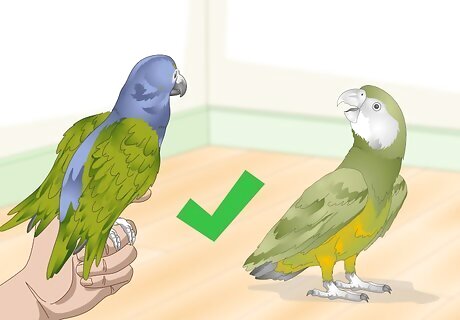
Keep more than one parrot. Senegal parrots need a lot of social interaction, either with their owner or with other birds. If you have the space, means, and desire to keep a second parrot, your birds can keep each other company and thus require a bit less attention from you. It is recommended to house the birds separately until you form a strong relationship with each of them. Keep no more than 2 birds per cage. A cage for 2 parrots should be twice the size of a cage for one.



















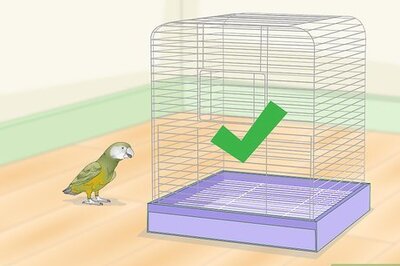
Comments
0 comment